 полная версия
полная версияStories of Useful Inventions
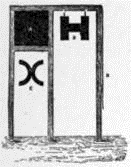
FIG. 6. – HOOKE'S AERIAL TELEGRAPH, 1684.
Although the elaborate system of aerial telegraph proposed by Polybius was not generally adopted, nevertheless for centuries, both in ancient times and during the middle ages, the fire signal was everywhere used for the quick despatch of important news. In the seventeenth century inventors began to devise new systems of aerial telegraphy. In 1663, the Marquis of Worcester, who was always busy with some great invention (p. 178), announced to the world that he had discovered a plan by which one could talk with another as far as the eye could distinguish between black and white, and that this conversation could be carried on by night as well as by day, even though the night were as dark and as black as pitch. But the telegraph of the Marquis was like many of his other inventions – it was chiefly on paper. In 1864, Dr. Robert Hooke of England invented a method by which aerial messages could be sent a distance of thirty or forty miles. His plan was to erect on hill tops a series of high poles connected above by cross-pieces and by means of pulleys suspend from the cross-pieces the letters of the alphabet which would spell out the message (Fig. 6). In order to read the letters at such great distances the eye was assisted by the telescope, an instrument which had recently been invented.

FIG. 7. – CHAPPE'S AERIAL TELEGRAPH, 1793.
But the greatest improvement in aerial telegraphy was made during the French Revolution by Claude Chappe, a Frenchman living in Paris. In 1793, Chappe erected on the roof of the palace of the Louvre a post at the top of which was a cross-beam which moved on a pivot about the center like a scale beam (Fig. 7). The cross-beam could be moved horizontally, vertically or at almost any angle by means of cords. Chappe invented a number of positions for these arms and each position stood for a certain letter of the alphabet. Machines of this kind were erected on towers at places from nine to twelve miles apart and soon Chappe was sending messages from Paris to the city of Lille, 130 miles away. The messages were sent with great rapidity, for they passed from one tower to another with the velocity of light – about 185,000 miles a second – and it was possible for the operator to spell out about 100 words in an hour. And Chappe's messages could be sent at any time, day or night, for the arms of the machine were furnished with Argand lamps for night work.
Chappe's invention was the greatest which had thus far been made in the history of the message. The new system of telegraphy proved to be entirely successful and practical and it was not long before machines similar to those invented by Chappe were in use in England and other countries. In 1828, an English writer had the following words of praise for aerial telegraphy: "Telegraphs have now been brought to so great a degree of perfection that they carry information so speedily and distinctly and are so much simplified that they can be constructed and maintained at little expense. The advantages, too, which result from their use are almost inconceivable. Not to speak of the speed with which information is communicated and orders given in time of war, by means of these aerial signals the whole kingdom could be prepared in an instant to oppose an invading enemy."
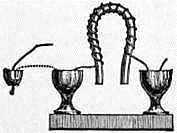
FIG. 8. – STURGEON ELECTRO-MAGNET, 1825.
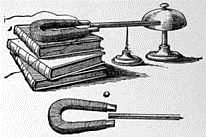
FIG. 9. – PROFESSOR HENRY'S ELECTRO-MAGNET, 1832.
But the aerial telegraph was soon to have a most dangerous rival. This rival was the electric telegraph. Many years before the invention of Chappe men had been experimenting with electricity with a view of sending messages by means of an electric current. These experiments began in 1728 when an Englishman named Gray caused electricity to produce motion in light bodies located at a distance of more than 600 feet. In 1748, the great Benjamin Franklin, who conducted so many wonderful experiments in electricity, sent an electric current through a wire which was stretched across the Schuylkill River and set fire to some alcohol which was at the opposite end of the wire. We may regard the flash of alcohol as a telegraph, for it could have been used as a signal. In 1819, Professor Oersted of Copenhagen brought a magnetic needle close to a body through which an electric current was passing and he observed that the needle had a tendency to place itself at right angles to the electrified body. In 1825, William Sturgeon of England coiled a copper wire around a bar of soft iron and found that when a current of electricity was sent through the wire the bar of iron became a temporary magnet; that is, the bar of iron attracted a needle when the current was passing through the wire and ceased to attract it when the current was broken (Fig. 8). These discoveries of Oersted and Sturgeon led to the invention known as the electro-magnet and the electro-magnet led rapidly to the invention of the electric telegraph, for by means of the electro-magnet a signal can be sent to a distance as far as a current of electricity can be sent along a wire. In 1831, Professor Joseph Henry, one of America's most distinguished scientists, discovered a method by which an electric current could be sent along a wire for a very great distance. The next year Henry constructed and operated an apparatus which was essentially an electric telegraph (Fig. 9). "I arranged," he said, "around one of the upper rooms of the Albany Academy a wire of more than a mile in length through which I was enabled to make signals by sounding a bell. The mechanical arrangement for effecting this object was simply a steel bar permanently magnetized, supported on a pivot and placed with its north end between the two arms of a horse-shoe magnet. When the latter was excited by the current the end of the bar thus placed was attracted by one arm of the horse-shoe and repelled by the other and was thus caused to move in a horizontal plane and its further extremity to strike a bell suitably adjusted." Thus by 1832 the electric current had been used for sending signals at a distance and the electric telegraph had been invented.
But the electric telegraph was still only a toy. How could it be made a practical machine? How could it be used for sending messages in a satisfactory manner? Inventors everywhere worked diligently to discover a satisfactory method of signaling and many ingenious systems were invented. As early as 1837 a telegraph line was established between Paddington, England and Drayton – a distance of 13 miles – and messages were sent over the wire. But the line failed to give satisfaction and its use was discontinued. The honor of inventing the first really practical and useful system of electrical telegraphy was at last won by an American, S. F. B. Morse, a painter and professor of literature in the University of the City of New York. In 1832 Morse began to think about a plan for recording signals sent by electricity and by 1837 he was about ready to take out a patent for making signals "by the mechanical force of electro-magnetic motion." Morse was a poor man and he lacked the means of conducting his experiments. He was fortunate, however, in making the acquaintance and gaining the confidence of Alfred Vail, a student of the University. Vail furnished the money for the experiments and assisted Morse in perfecting his system. Indeed some of the most original and valuable features of Morse's system were invented by young Vail and not by Morse. In the face of much discouragement and bad luck Morse and Vail worked patiently on together and by 1843 their invention was completed.

FIG. 10. – THE KEY USED BY MORSE.
The main feature of Morse's system was to use the electric current for sending an alphabetical code consisting of certain combinations of "dots and dashes." The "dots" were simply clicking sounds and the "dashes" were simply intervals between the clicking sounds. The sounds were made by closing and breaking the current by means of a key or button (Fig. 10). If the sender of the message pressed upon the key and immediately released it he made at the other end of the line a sharp click which was called a "dot," and a single dot according to the code was the letter E. If the sender of the message pressed upon the key and held it down for a moment he made what was called a "dash," and a single dash according to the code was the letter T. Thus by means of "dots and dashes" any letter of the alphabet could be speedily sent.
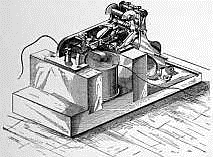
FIG. 11. – MORSE'S TELEGRAPHIC INSTRUMENT.
Morse applied to Congress to aid him in his plans and in 1843 he secured an appropriation of $30,000 for establishing a telegraph line between Baltimore and Washington. Morse and Vail now hurried the great work on and by May, 1844, the wires had been stretched between the two cities and the instruments were ready for trial. And such heavy, clumsy affairs the instruments (Fig. 11) were! "The receiving apparatus weighed 185 pounds and it required the strength of two strong men to handle it. At the present day an equally effective magnet need not weigh more than four ounces and might be carried in the vest pocket." But, awkward and clumsy as it was, the new telegraph did its work well. On May 24, 1844, Morse sent from Washington the historic message, "What hath God wrought?" (Fig. 12) and in the twinkling of an eye it was received by Vail at Baltimore, forty miles away.
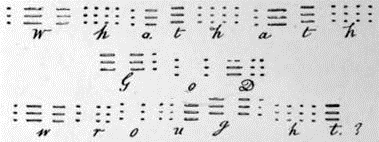
FIG. 12. – THE FIRST TELEGRAPHIC MESSAGE SENT FROM WASHINGTON TO BALTIMORE, MAY 24, 1844.
The Morse system proved to be profitable as well as successful and after 1844 the electric telegraph was soon in general use in all parts of the world. In the United States cities were rapidly connected by wire and by 1860 all the principal places in the country could communicate with each other by telegraph. In 1861, a telegraph line extended across the continent and connected New York and San Francisco. Five years later, thanks to the perseverance and energy of Cyrus W. Field, of New York, the Old World and the New were joined together by a telegraphic cable passing through the waters of the Atlantic from a point on the coast of Ireland to a point on the coast of Newfoundland. With the laying of this cable, in 1866, all parts of the world were brought into telegraphic communication and it seemed that the last step in the development of the message had been taken.
But the story of the Message did not end with the invention of the telegraph and the laying of the Atlantic cable. Almost as soon as inventors had learned how to send a current along a wire and make signals at a distance they began trying experiments to see if they could not also send sounds, especially the sound of the human voice, along a wire; as soon as they had made the telegraph they began to try to make the telephone.25 In 1855 Professor Wheatstone of England invented an instrument by means of which musical sounds made in one part of a building were carried noiselessly along a wire through several intervening halls and reproduced at the other end of the wire in a distant part of the building. About the same time a Frenchman named Bourseul produced a device by which a disk vibrating under the influence of the human voice would, by means of an electric current, produce similar vibrations of a disk located at a distance.
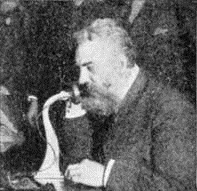
FIG. 13. – PROFESSOR ALEXANDER GRAHAM BELL SPEAKING OVER THE FIRST LONG DISTANCE TELEPHONE BETWEEN NEW YORK AND CHICAGO.
About 1874 Professor Alexander Graham Bell, of Boston, seized upon an idea similar to that of Bourseul's. Bell saw in the vibrating disk a resemblance to the drum of the human ear. In imagination he beheld "two iron disks, or ear drums, far apart and connected by an electrified wire, catching vibrations of sound at one end and reproducing them at the other." With this conception in mind he went to work to construct an apparatus that would actually catch the sounds of the voice and reproduce them at a distance. Bell, like Morse, was without means to conduct his experiments, but friends came to his aid and furnished him with the necessary money and by 1876 his labors had resulted in making a machine that would carry the human voice; he had invented the telephone. At first the telephone was only a toy and would operate at only short distances, but as improvements were made the distances grew greater and greater until at last one could talk in Boston and be heard in Denver, or talk in New York and be heard in London. The telephone grew rapidly into favor as a means of communication and in a short time it was used more than the telegraph. It is estimated that in the entire world about ten billion conversations are held over the telephone in the course of a single year.
As wonderful as the telephone was it was quickly followed by an invention even more wonderful. Almost as soon as men had thoroughly mastered the art of sending messages by the aid of wires they set about trying to find a way by which messages could be sent long distances without any wires at all. In 1889, Heinrich Hertz, a German scientist, showed that electric waves could be sent out in all directions just as light waves go out in all directions. He also showed how these waves might be produced and how they might be detected or caught as they passed through space. In 1896, William Marconi, an Italian electrician, making use of the facts discovered by Hertz, sent a message a distance of 300 feet without the use of wires. This was the first wireless telegraph. Marconi continued his experiments, sending wireless messages between places further and further apart, and by 1911 he was able to signal without cables across the Atlantic Ocean.
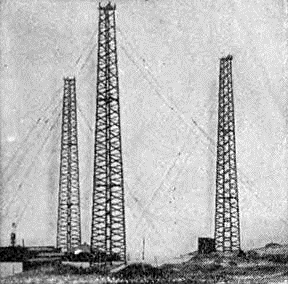
FIG. 14. – A WIRELESS TELEGRAPH STATION.
And now it seems that the wireless telegraph is to be followed by an invention still more wonderful. Men are now working upon a wireless telephone. Already it is possible to talk without the aid of wires between places so far apart as Newark and Philadelphia, and many inventors believe that it is only a matter of time when the wireless telephone will be used side by side with the wireless telegraph.
1
Where readers are quite young the Foreword had better be postponed until the stories themselves are read.
2
Mr. Walter Hough of the National Museum, himself a wizard in the art of fire-making, tells me that a blaze cannot be produced simply by rubbing sticks together. All that can be done by rubbing is to make them glow.
3
A narrow strip of leather.
4
The ancient Greeks used a burning-glass or – lens for kindling fire. The lens focused the sun's rays upon a substance that would burn easily and set it afire. The burning-glass was not connected in any way with the development of the match.
5
Several of the illustrations in this chapter are reproduced through the courtesy of the Boston Stove Co.
6
Hold the end of a dry towel in a basin of water and watch the water rise in the towel. It rises by capillary action.
7
Light a short piece of candle and place it in a tumbler, and cover the top of the tumbler. The experiment teaches that a flame must have a constant supply of fresh air and will go out if the air is shut off.
8
J. R. Smith, "The Story of Iron and Steel," p. 3.
9
From "Five Black Arts," p. 311.
10
The old forge continued to be used by the side of the blast furnace for centuries, and of course where it was used it was still called a forge. Thus we are told that in Maryland in 1761, there were eight furnaces and ten forges. It is said that as late as twenty-five years ago in certain parts of the Appalachian regions the American mountaineer still worked the little primitive forge to make his iron.
11
It was given the name of pig iron because when the molten metal ran into the impressions made for it upon the sanded floor and cooled, it assumed a shape resembling a family of little pigs.
12
Daniel Webster was another great statesman who turned his attention to the making of plows. He planned a plow (Fig. 11) and had it made in his workshop on his farm at Marshfield. When the plow was ready for use, Webster himself was the first man to take hold of the handles and try it. The plow worked well and the great man is said to have been as much delighted with his achievement as he was with any of his triumphs in public life at Washington.
13
To winnow grain is to separate it from the chaff by a fanning process.
14
Matthew xxiv, 41. In ancient times nearly all the grinding was done by women.
15
Ceres was the goddess of grain.
16
In the thirteenth century wind-power began to be used for turning mills, and in some countries windmills were as common as water-mills.
17
About the year 1700 elliptical springs were invented, but they did not find their way into general use until more than a hundred years later.
18
A spirited account of life on a Roman galley is found in Wallace's "Ben Hur."
19
Wood, "Curiosities of Clocks and Watches."
20
The illustration is taken from Keary's "Dawn of History."
21
In the payment of the postage no stamps were as yet used. Indeed the postage stamp is a late invention. Postage stamps were not used in England until the year 1840, while in the United States they were not regularly used until 1847.
22
In 1840, the English government following the recommendations of Sir Rowland Hill, adopted throughout the United Kingdom a uniform rate of one penny for letters not exceeding half an ounce in weight, and after this cheap postage became the rule in all countries.
23
The verb telegraph means to write at a distance afar off.
24
As there are only 24 letters in the Greek alphabet, the last group was one letter short, but this did not interfere with the working of the system.
25
Just as the word telegraph means to "write afar off," so the word telephone means to "sound afar off."



